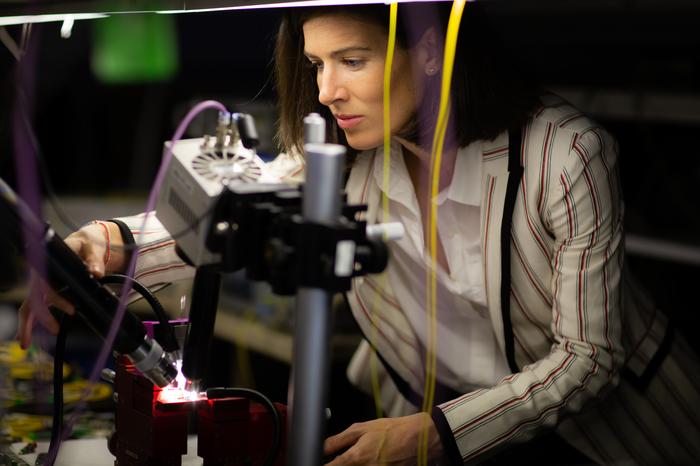'Haven for photons' discovery holds promise for robust qubits
- 02 November, 2018 10:08

One of the biggest challenges faced by researchers working to build quantum computers is the need to protect the states of quantum bits – or qubits – for long enough for them to be used to perform calculations.
Preserving the ‘entangled superposition’ of qubits – which unlike the binary on or off of classical computing switches combine zero and one – proves tricky because of interference from the environment.
Approaches that rely on superconductors and trapped ions to build logic gates are highly susceptible to electromagnetic interference, which makes them difficult to scale up into useful machines.
The use of photons – packets of light energy – instead of electrons is a promising alternative. Photons are well isolated from the thermal and electromagnetic environment, but the manufacture of quantum devices based on photonic qubits has been limited due to scattering loss and other errors.
Now, an experimental breakthrough from researchers at the University of Sydney Nano Institute, working in collaboration with scientists at Technion Israel Institute of Technology – published today in Science – has demonstrated a method to protect photons on a chip, which they call ‘edge modes’.
“An edge mode is like a haven for photons. Once the photons are in this haven, they are protected from things that will normally perturb them, such as imperfections and defects,” lead author Dr Andrea Blanco-Redondo from Sydney Nano Institute, told Computerworld.
“We can now propose a pathway to build robust entangled states for logic gates using protected pairs of photons,” she said.

Safe place for photons
While topologically protected states have previously been demonstrated for single photons, it is likely that scaled quantum information systems will rely on multi-photon states.
Blanco-Redondo and colleagues developed a lattice structure of silicon nanowires, which creates a “particular symmetry that provides unusual robustness to the photons’ correlation”.
Channels, or waveguides, made using 500 nanometres silicon nanowires, were lined up in pairs with a deliberate defect through the middle, to create two lattice like structures each with different topology.
The topology allows the photons – created by high-intensity, ultra-short laser pulses – to ‘pair up’ thanks to the ‘edge mode’.
“So we create this safe place for photons in our chip, then we put some photons in this haven and add imperfections to the chip. What we observe is that the quantum properties of the photons in the edge mode are unchanged whereas those of the photons that are outside are heavily affected by the imperfections,” Blanco-Redondo explains.
“Our result is exciting at a fundamental level because it shows the existence of protected quantum states at the edge of a topological material,” she added.
Exciting early days
Blanco-Redondo admits that it is “still too early to judge what will be the real impact of this work in the quantum computing field” but that it undoubtedly has promising implications.
“It certainly opens new avenues for using topology as a tool to produce robust qubits that will be immune to certain types of imperfections,” she said.
Using topological features to protect quantum information is an approach being pursued by Microsoft Quantum Laboratories – one of which is in Sydney – which is developing electron-based qubits where quantum information is protected via the knotting of quasiparticles known as Majorana fermions.
“Nobody knows what the winning technology for quantum computing will be, or if there will be only one or several viable routes to it. Photons are promising because they do not interact with the environment, this means that they can keep the information encoded in them for much longer than their electrons counterparts,” Blanco-Redondo added.
Professor Stephen Bartlett, a theoretical quantum physicist at Sydney Nano Institute but unconnected to the study, said the paper – Topological Protection of Biphoton States – is “exciting at a fundamental level”.
“What it means for quantum computing is unclear as it is still early days. But the hope is that the protection offered by these edge modes could be used to protect photons from the types of noise that are problematic for quantum applications,” he said.
Work now will be focused on further improving the protection of photon entanglement to create robust, scalable quantum logic gates.
The researchers work – which was funded by the Technion Society of Australia, NSW and the NSW Department of Industry – has been “a long quest” which begun at the start of 2016, Blanco-Redondo said.
“There was no eureka moment but more of a long process of measurements and interpretation of these measurements,” she explained.
Publication of the paper in Science, however, was certainly a special moment, Blanco-Redondo added.
“I must admit however that I jumped on the bed when I read the paper had been accepted. And yes, there was also a very good bottle of Spanish wine involved in the celebration!” she said.
